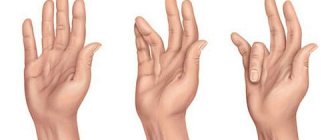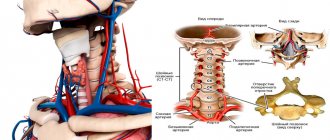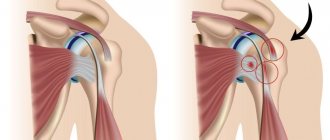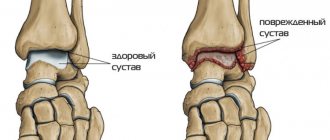Your orthopedist
Everything about the musculoskeletal system on one site: Back, Joints, Bones and more
Home › Treatment › Folk remedies › Treatment of radiculitis with folk remedies: recipes and useful tips
Intense attacks of pain, limitation of physical activity, decreased quality of life - these problems are familiar to everyone who suffers from such an unpleasant disease as radiculitis. There are an incredible number of factors influencing the development of the disease and aggravating its course.
Reasons such as excessive physical activity or, conversely, limitation of physical activity, poor diet, bad habits, and excess body weight can lead to the appearance of characteristic symptoms.
In an effort to get rid of discomfort, many often turn to the centuries-old experience of alternative medicine, which contains a lot of simple, proven and truly effective natural medicines. In combination with proper nutrition for joints and leading a healthy lifestyle, folk remedies for radiculitis work real miracles, relieving pain and discomfort.
Let's talk in more detail about the variety of alternative medicine techniques and how to correctly apply them in practice to combat sciatica.
Traditional medicine recipes will help you get rid of radiculitis and strengthen your body.
- Treatment with traditional methods
- Proper nutrition
- Traditional medicine recipes Healing ointments
- Tinctures for treatment
- Therapeutic compresses
- Therapeutic baths
- Useful gymnastics
What is radiculitis: concept and symptoms
Radiculitis (radiculopathy) is compression of the nerve endings (roots) of the spinal cord, resulting in inflammation of the nerve fibers entering the openings between the vertebrae.
It comes in 4 types:
| Cervical | accompanied by painful sensations in the neck, often a person can hardly turn his head; |
| Chest | the patient experiences discomfort in the back (upper part), chest, and may be accompanied by numbness on the left side; |
| Lumbosacral | characterized by acute pain in the lumbar region, inability to move; |
| Discogenic | entails pain in the back due to the fact that displaced spinal discs pinch the nerve roots. |
Radiculitis is classified according to its location
Radiculitis is always quite painful and is characterized by the following symptoms::
- Impaired movement, limited mobility and stiffness.
- Spontaneous flexion of the limbs (often legs) in a horizontal position of the human body.
- Numbness at the site of the lesion.
- Burning and tingling near the source of pain.
- Increased sweating.
- Paleness of the face, arms, neck.
- Muscle weakness.
- Severe pain at night and, as a result, insomnia.
- Dizziness.
- Deterioration of hearing and vision.
- Disruption of the gastrointestinal tract, as well as the genitourinary system.
Video: “Lumbar radiculitis”
Basic methods of traditional treatment of radiculitis at home
Radiculitis brings considerable discomfort from everyday life; it unsettles a person from the first minutes of the onset of the disease. You can ease its course at home.
The main way to reduce pain are medications and ointments. A patient who occasionally suffers from back or neck pain must have painkillers and warming ointments in his first aid kit.
You can rub it on the sore spot:
- ointments based on bee or snake venom (“Finalgon”, “Apizartron”, etc.);
- alcohol-based pepper tinctures;
- novocaine or ultracaine;
- formic alcohol;
- camphor alcohol.
The effects of drugs used topically must be supplemented with painkillers:
- "Ibuprofen";
- "Nurofen";
- "Diclofenac";
- "Ortofen".
This list of medications is also available in the form of suppositories . The action of rectal suppositories occurs more slowly, but the effect lasts longer than from tablets.
A warm belt helps ease the general condition during exacerbation of radiculitis. You can buy it at the pharmacy, or you can knit it yourself. Sheep or dog wool is excellent as a raw material for manufacturing. In order to knit a healing belt, the wool must first be salted.
The yarn must be placed in a thick salt solution for two hours, dried and knitted into a product. Don't forget to use gloves, because... salt can damage the skin of your hands. The belt should not be applied to open areas of the body; a gauze bandage is usually placed under it. A salted belt quickly relieves pain and warms up the muscles.
Important! Heat is one of the main treatments for radiculopathy. Under no circumstances should you use cold compresses or ice. During illness, try to avoid drafts and hypothermia. The back or neck area (depending on the location of the pinching) should be covered with clothing and protected as much as possible from low temperatures.
With radiculitis, it is necessary to reduce the patient's mobility. It should be remembered that the patient simply needs to reduce mobility . The person needs bed rest. The best way to do this is to rest on an orthopedic mattress or any other hard surface. The body should lie flat, all muscles and joints should be fixed. Soft sofas and feather beds will only aggravate the situation and increase the pain syndrome.
With radiculitis, peace is needed not only for your body, but also for your soul. Psychological balance is very important in the onset of recovery. Sometimes unusual restrictions on mobility and performance put a lot of pressure on a person, he finds himself within limits, which inevitably leads to stressful situations. In this case, to improve your well-being or prevent it, you should drink soothing teas (chamomile, mint, lemon balm) and herbs (motherwort and valerian).
During the period of exacerbation of radiculitis, it is recommended to adjust your diet . It is not advisable to eat coffee and black tea, sweets, high-fat cottage cheese, spicy, fried and fatty foods. It is advisable for the patient to eat more vegetables and fruits, and cook dishes in the oven or steamer.
There will be many benefits if you include garlic and lemon in your diet. It is recommended to eat 2-3 slices within an hour after breakfast, and lemon juice is dissolved in a glass of non-carbonated purified water. These two products saturate the body with vitamins and relieve pain.
Find out more about traditional treatment for sciatica:
- The use of gels and ointments for radiculitis
- You can read about gymnastics against lumbar radiculitis on the page
- You can learn more about medications and vitamins in the form of injections for radiculitis here
- Massage technique for radiculitis
Vitamins
In general, vitamins for radiculitis play a very important role - they can speed up the healing process and prevent exacerbations of the disease in the future. Patients with this disorder are advised to eat more foods rich in vitamins A, C, E, and other antioxidants. If necessary, you can take supplements containing these beneficial substances.
B vitamins are very useful for radiculitis, especially B1, B6 and B12. Scientists believe that taking supplements with these vitamins in combination with over-the-counter analgesics can provide long-term pain relief for people with sciatica. Vitamin B1 can be obtained from foods such as spinach, carrots, red beets, onions, potatoes, white cabbage, beans, nuts, and various grains.
Potatoes, whole grain bread, buckwheat, millet, peppers, pork, chicken, beef, hazelnuts, walnuts, citrus fruits, spinach, tomatoes and strawberries are rich in vitamin B6.
In addition, supplementation with zinc, vitamin D, lipoic acid, and omega-3 fatty acids is recommended for successful treatment of sciatica.
The main sources of vitamin B12 are various animal products, for example, meat, fish, organ meats, and dairy products. Unfortunately, many patients begin to monitor their diet and take vitamins only during exacerbations of radiculitis, and some time after the symptoms of the disease disappear, they return to their usual diet. Ideally, the body should constantly receive a sufficient amount of the nutrients listed above - this will minimize the risk of repeated attacks, as well as avoid some complications of radiculitis.
Treatment of radiculitis with folk remedies
Did you know that...
Next fact
Many people practice treating radiculitis at home, widely using the range of knowledge of traditional medicine. The advantage of these methods is that they are very accessible and take little time .
It is worth remembering that traditional treatment is not the main method of treating radiculitis. In addition, they can be used not only for treatment, but also for the prevention of the disease. Decoctions, tinctures, self-prepared ointments, healing baths perfectly tone and warm up muscles, help relax and reduce stress on the nervous system and musculoskeletal system.
Another important fact is that you can carry out therapeutic measures without leaving your home. Attacks of radiculitis are extremely painful; even moving around the house causes enormous discomfort, not to mention going to the clinic and spending time in line.
But it is worth noting that folk remedies are not a panacea for this disease . Consultation with a specialist and his approval to carry out preventive or alleviating procedures is simply necessary for any deviation from the norm, and especially for radiculitis. It is the specialist who must assess your health status, concomitant diseases, age, and tell you about the possible dosage.
Self-medication often aggravates existing chronic diseases. For example, the use of some components of tinctures increases blood pressure (contraindicated for hypertensive patients), increases stomach acidity (cannot be used for gastritis), etc. .
Traditional medicine recipes for radiculitis
Radiculitis occurs suddenly and occurs in a rather acute form, so you need to act immediately. These recipes from the treasury of wisdom of our people will help you significantly improve your condition at the time of exacerbation of the disease.
Potato compresses
Boil 5 small potato tubers (along with skins), chop with a fork or using a blender. Apply the resulting puree to a clean cloth and apply to the sore spot. Wrap the top with a warm cloth and ensure complete static conditions. Repeat 3 times during the day.
Healer bulb
Peel a medium onion and cut in half. Massage your back or neck with circular movements for 15-20 minutes. Repeat the procedure every 2 hours.
Warm cabbage leaves
Separate five medium leaves from a head of cabbage. Place them in boiling water for 6 minutes. Next, take it out, cool slightly and apply to the sore spot. Wrap the top with a terry towel: change the leaves as it cools. One session – 30 minutes. A minimum of three sessions must be done per day. On the third day there is usually relief.
Hop compress
Boil hop leaves and stems in a small saucepan, then remove from it with a slotted spoon and wrap in cheesecloth. Apply the compress to your back (neck) and cover with a woolen product. In this case, a healing belt will come in handy. The higher the temperature of the poultice, the more effective. However, the leaves should not be applied too hot to avoid burns.
Pay attention to recipes for preparing remedies for back painVinegar and rosemary
In the ancient books of Russian healers you can find a very unusual, but at the same time useful recipe for eliminating pain from radiculitis. To do this, take a bunch of rosemary (10-15 medium sprigs) and immerse it in boiling water for 10 minutes. Place a cotton cloth over the steam generated in the pan.
As soon as the canvas has become wet, it is moistened with 9% vinegar diluted with water (diluted 1/1) and applied to the site of inflammation.
After holding the compress for 10-15 minutes, you need to forcefully rub your back or neck until the skin becomes slightly red. The procedure is carried out once a day for 4 days.
As noted above, radiculitis is treated not only by external influences. In folk medicine, there are many recipes for tinctures that are taken orally.
Radish wine
To prepare a healing drink, you need one small fresh radish root vegetable. Chop the vegetable into cubes and mix with 450 g of white wine. Leave in a dark, cool place for a month. After a month, strain the drink and take one tablespoon twice a day after meals. The course of treatment is 7 days.
Tea for pain relief
Heat the water to approximately 90 degrees. Reduce heat to low and add a pinch of anise seeds, marjoram leaves, mint and a sprig of rosemary. Boil for 5 minutes. Cool to room temperature and take 200 ml twice a day.
Willow decoction
Willow contains a large amount of salicin, which has a beneficial effect on the nervous system and facilitates recovery processes. A huge amount of this beneficial substance is contained in the bark of the willow tree. Therefore, it would be more advisable to use not leaves, but rather willow bark or twigs in preparing the decoction. For one liter you will need a small piece (about the size of your palm) of bark or 3-4 small twigs. Boil them in clean water (15 minutes) and take one glass every day.
Collection of herbs
All these herbs can be found in dried form at the pharmacy. The proportions can be changed depending on the amount of water. We will make one liter of healing decoction. To do this you will need 2 tablespoons of thyme, a bunch of nettles and oregano. Boil for 5 minutes and let sit for about one hour. Take both during exacerbation and for prevention: for pain – 2 glasses per day; for tone – 1 glass.
Massaging the sore spot is a great help in the fight against radiculitis. This process is quite painful, so healing oil can be used to enhance the effect.
Massage oil
For 1 liter of olive oil you need to take 200 g of calendula flowers (popularly “marigold”), 150 g of plantain leaves and stems, and 200 g of St. John’s wort. The oil needs to be slightly heated in a water bath, add all the ingredients and warm it well (temperature about 80 degrees). Cool the resulting mass and leave in a dark place for 3 days. The resulting oil can be stored for only one month.
Video: “Treatment of radiculitis according to hunting: an old recipe”
Black radish
Black radish is also an effective natural cure for sciatica. Grate it on a fine grater or grind it in a meat grinder, put the pulp on gauze, and apply it to your back. Place a layer of polyethylene or foil on top, and then wrap a scarf around your back. Radish can be mixed with grated garlic in a 1:1 ratio. It is best to carry out this procedure after a hot shower or bath. Radish and garlic cause irritation and mild burning of the skin for some people, but these side effects go away quickly.
Grated potatoes are used to treat sciatica in the same way as radishes, but they can be applied directly to the skin.











